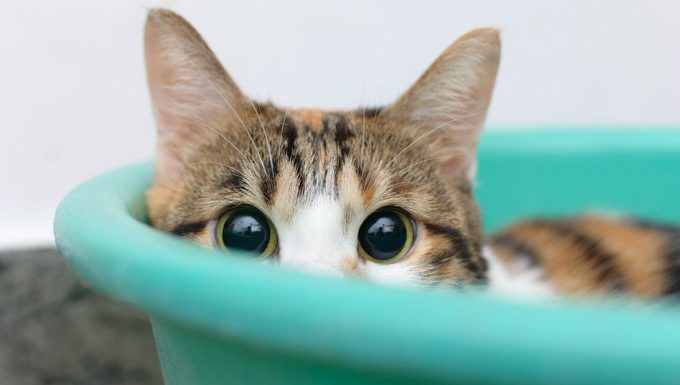Introduction
Hey there, fellow cat enthusiasts! Have you ever wondered if your feline friend might be feeling a bit insecure? Just like us humans, cats can experience feelings of insecurity, and it’s essential to recognize the signs so we can support them better. Join me on this purr-fect adventure as we uncover six surprising signs of insecurity in cats and learn how to help our beloved furballs feel more confident and content.
Understanding Feline Insecurity
Before we delve into the signs of insecurity, let’s take a moment to understand what it means for a cat to feel insecure. Cats are creatures of habit and can be sensitive to changes in their environment or routine. Factors such as new additions to the household, changes in their territory, or past traumatic experiences can all contribute to feelings of insecurity in cats.
Excessive Hiding
Sign
Is your cat spending more time than usual hiding away in closets, under furniture, or in secluded spots around the house? This could be a sign of insecurity. Cats may seek out hiding spots to feel safe and secure when they’re feeling vulnerable or stressed.
Explanation
Hiding is a natural behavior for cats when they feel threatened or insecure. By retreating to a hidden location, cats can avoid potential dangers and find solace in a secluded space away from perceived threats.
Expert Insight
According to veterinarians, excessive hiding can also be a sign of underlying health issues, so it’s essential to monitor your cat’s behavior closely and consult with a vet if you have concerns.
Avoidance Behavior
Sign
Does your cat seem to avoid certain people, animals, or areas of the house? Avoidance behavior, such as fleeing or cowering when approached, can indicate feelings of insecurity in cats. They may perceive certain stimuli as threatening or unsettling, leading them to avoid interaction or certain environments.
Explanation
Cats may avoid social interaction or specific areas of the home if they feel insecure or anxious. This behavior serves as a coping mechanism to reduce stress and maintain a sense of control over their environment.
Expert Insight
Animal behaviorists recommend creating a safe and predictable environment for insecure cats, with plenty of hiding spots and elevated perches where they can retreat when feeling overwhelmed.
Excessive Grooming
Sign
Is your cat spending an excessive amount of time grooming themselves, to the point where they’re developing bald patches or irritated skin? While grooming is a natural behavior for cats, excessive grooming can be a sign of insecurity or stress.
Explanation
Cats may engage in excessive grooming as a self-soothing mechanism when they’re feeling anxious or insecure. This behavior can provide temporary relief from stress but may lead to skin irritation or hair loss if done excessively.
Expert Insight
Veterinarians advise monitoring your cat’s grooming habits and consulting with a vet if you notice any changes or signs of skin irritation. Addressing the underlying cause of insecurity is key to preventing excessive grooming behavior.
Aggression Towards Other Pets or Humans
Sign
Is your cat displaying aggressive behavior towards other pets, family members, or visitors? Aggression, such as hissing, swatting, or biting, can be a sign of insecurity in cats. They may lash out defensively when they feel threatened or overwhelmed.
Explanation
Insecure cats may exhibit aggression as a way to establish boundaries and protect themselves from perceived threats. This behavior can be triggered by changes in their environment, interactions with unfamiliar animals or people, or feelings of insecurity in their territory.
Expert Insight
It’s essential to address aggressive behavior in cats promptly to prevent escalation and ensure the safety of all household members. Consult with a veterinarian or animal behaviorist for guidance on managing and modifying aggressive tendencies in insecure cats.
Excessive Vocalization
Sign
Is your cat vocalizing more than usual, whether it’s meowing, yowling, or growling? Excessive vocalization can be a sign of insecurity or anxiety in cats. They may vocalize to express their discomfort or seek reassurance from their owners.
Explanation
Cats may use vocalization as a means of communication when they’re feeling insecure or stressed. By vocalizing, they may be seeking attention, expressing discomfort, or signaling their need for reassurance from their owners.
Expert Insight
While some level of vocalization is normal for cats, excessive or persistent vocalization may indicate underlying stress or insecurity. Providing a calm and reassuring environment, along with regular interaction and enrichment, can help alleviate feelings of insecurity in vocal cats.
Changes in Litter Box Behavior
Sign
Have you noticed changes in your cat’s litter box behavior, such as avoiding the litter box altogether or urinating outside of the box? Changes in litter box behavior can be a red flag for insecurity or stress in cats. They may avoid using the litter box if they feel unsafe or unsettled in their environment.
Explanation
Cats are creatures of habit and prefer a clean, quiet, and secure environment for toileting. Changes in their litter box behavior, such as avoiding the box or eliminating outside of it, may indicate underlying feelings of insecurity or stress.
Expert Insight
Veterinary experts recommend addressing changes in litter box behavior promptly, as they can be indicative of underlying medical or behavioral issues. Providing multiple litter boxes in quiet, accessible locations and addressing any potential stressors in the environment can help alleviate insecurity-related litter box problems.
Conclusion
There you have it, fellow cat lovers! By recognizing the subtle signs of insecurity in our feline companions, we can take proactive steps to help them feel more confident and secure in their environment. Whether it’s providing plenty of hiding spots, minimizing environmental stressors, or seeking guidance from veterinarians or animal behaviorists, we can make a world of difference in our cats’ well-being. So, let’s shower our insecure kitties with love, understanding, and support, helping them navigate life with confidence and contentment!
- Best Clay Alternatives for 2025 - April 19, 2025
- Best Seamless.ai Alternatives for 2025 - April 19, 2025
- Best UpLead Alternatives for 2025 - April 18, 2025



